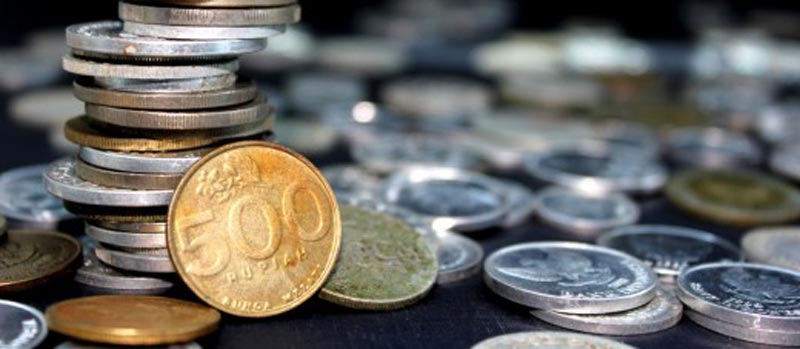Learn how to play pocket pairs to get the most value. Consider your range, opponents range, and stack sizes to make the most of your hand.
Let's learn how to ship the chips with pocket pairs!

Pocket pairs are strong hands that can make us a ton of money in NLHE, but they typically require a little bit of special treatment. We'll consider a few of the different situations that we find ourselves in with PP's to help improve our efficiency. First let's start with a little basic information.
Pocket-pairs account for around 5.88% of hands. TT+ are generally reasonably high playability hands given the stacks aren't super deep, since they flop overpairs frequently. We will be paying special attention to 99 and below which account for 3.62% of all holdings. The playability of these hands is low, but they have the potential to flop very big (I.e a set). Despite the low playbility of these hands, they have great
equity. Even pocket twos is a slight favourite vs AKo, and as a result pocket-pairs can be very valueable in short-stack battles.
Set-Mining

One of the most common usages for pocket-pairs is set-mining. However it's not the case that any pocket-pair is good for a set-mine in every situation. The following must considered -
a) The stacks must be deep enough to we get a high enough payout when we hit
b) The pocket-pair must be strong enough given the position we are in
c) Even if the stacks are deep we must consider ourselves to have reasonable implied odds
Deep Stacks - The general guide is that we should be able to make 20x our preflop investment. So if we invest $1 preflop then there should be at least $20 remaining in the effective stacks.
However this guide is extremely rough. There are some situations where the effective stacks are deeper and we shouldn't set-mine. There are other situations where we are perhaps only making around 13x our initial investment and can still set-mine.
The difference can be attributed to the quality of our implied-odds.
Position – Our implied odds will be affected by our position. For example it's recommend that in MP facing a UTG open we should set-mine 77+ only. The first reason is that with four guys still to act behind us, we can easily get squeezed off our hand, which means the effective price we are getting preflop is a lot worse than it initially appears. Secondly if a bunch of guys decide to overcall and we flop bottom set with our 22, we can often be in trouble when all the money goes in. Set-over-set is not always a cooler.
Perhaps in CO we can defend something like 44+, while in the BTN and blinds we can often defend any pair (assuming the stacks sizes are sufficient).
Estimating Implieds – There is no formula for implied-odds, since it is not purely a function of the effective stacks. We also need to know what type of opponent we are facing. Assuming villain is a huge fish or extremely aggressive, then we will typically find our implied-odds go up since we are likely to get a big payout when we hit.
The common situation where most players would decide we don't have sufficient implieds for a set-mine is when we are in the SB facing a 3x BTN open. It's generally considered not correct to call with 22-66 for a set-mine. The reasoning is that BTN's
range is so wide that we are unlikely to get paid off if we hit. This is not universally true though, BTN could be a huge
calling station. In other words we really need to also make a decent appraisal regarding our opponent before we know if set-mining is correct.
Calling for Value

Naturally we should not assume that the only value in pocket-pairs is trying to hit a set. In most cases any pair above 77 or so is going to be a call for pure value and we should be thinking about defending on various flops even if we don't hit.
So let's say CO opens and we are on the BTN with
88, we should call simply because
88 is in very good shape against his
range. Depending on the flop
texture we should strongly consider not folding when facing a cbet.
t75
There is no good reason to be folding here when facing a regular sized cbet from our opponent. There is decent chance our 88 is still good.
As a rough guide
0 overcards –
Float, possibly even value-raise
2 overcards – Fold, unless there is something else going on such as a gutshot or oesd
3bet Bluffing
In the majority of cases smaller PP's will not be used as 3bet bluffs. The exception is a spot where we don't feel we get the right price preflop but we can generate a decent amount of fold-
equity with a 3bet.
The example we listed earlier of SB vs BTN is the most common scenario. It's perfectly acceptable to have 22-66 as part of our default 3bet bluffing
range.
Assuming we get called, pocket-pairs don't have very good playability. In the vast majority of cases there simply won't be many good turn barrel cards. Let's say we hold the
33 and the board
texture is
k55
The only thing we have going for us is 2 outs to make a set and very weak
backdoor spade draw. This is not enough turn potential for us to consider cbetting the flop as a decent option in general. We should be check/folding the vast majority of the time when we 3bet a small pocket pair and miss our set.
So despite pocket-pairs being low playability hands this is not the same as saying they are difficult to play. They are actually very easy to play as 3bets. If we hit our set we play for value. If we miss our set, we check/fold. In other words it's a little bit like set-mining apart from the fact that we have a chunk of fold-
equity preflop too.
Playing vs Shorties

In most cases we'd never use a pocket-pair as a 4bet bluff – unless....that 4bet just so happened to be an all-in bet as it will be frequently if we are playing against shortstacks.
So imagine a full-stacked guy 3bets us and we decide to 4bet bluff with 66, this will often be a pretty bad decision because -
a) We don't have any blockers and will get less folds.
b) The main strength of this hand is it's pot-equity and we are typically planning on folding to a 5bet anyway, so we don't get to realise this equity. c) The hand has low playability if called.
We'd much rather 4bet a different type of high-
equity hand which also has blockers and a measure of playability such as a suited-Ace or suited-King.
However imagine our opponent is only 40bb deep and he decides to 3-bet us. 4-betting all-in is a great decision because -
a) We have a combination of fold-equity and great pot-equity. b) The playability of our hand is no longer relevant.
We will often even be a favourite vs some of our opponents value hands. It's reasonable he would 3bet/call something like AKo and we will actually end up being a slight favourite with our pocket pair.
Playing with an Advanced Dynamic

The following rarely applies at any limit below about 200nl.
Assuming we have the correct dynamic mid and even low pocket-pairs can be used as 5-bet bluff jams. In most cases we would not be 3betting mid/low pocket-pairs in position, but this is one of the exceptions.
a) Our opponent perceives us to be 3betting hyper aggressively.
b) Our opponent is fighting back with a very aggressive 4bet range.
Even though we wouldn't typically 3bet something like
77 BTN vs CO, we can start doing so solely for the purpose of exploiting this dynamic. CO will 4bet wide and
77 is a great 5bet-bluff-all-in hand since it has so much
equity.
It's not recommend you try this out at the lower limits without a very strong read. In most cases you will simply be burning money by stacking off too wide!
Where to Start?
The scenarios in this article have been presented in order of difficulty. To improve your pocket pair game it's recommend you start with the first scenario and gradually incorporate each of the situations into your game. Remember that the last scenario will work best at slightly higher limit games and only after a certain dynamic has been established.








